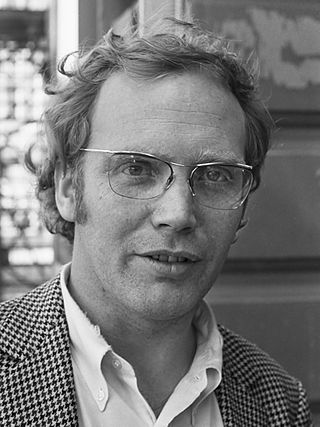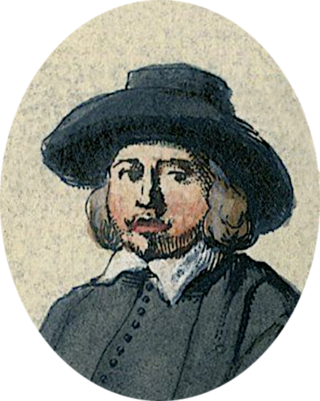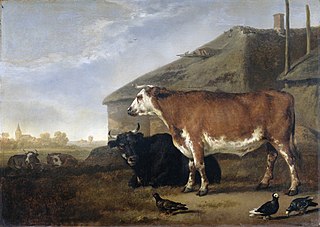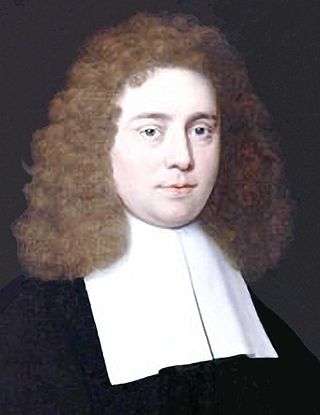
Johan de Witt, lord of Zuid- en Noord-Linschoten, Snelrewaard, Hekendorp en IJsselvere, was a Dutch statesman and a major political figure in the Dutch Republic in the mid-17th century, the First Stadtholderless Period, when its flourishing sea trade in a period of globalization made the republic a leading European trading and seafaring power – now commonly referred to as the Dutch Golden Age. De Witt controlled the Dutch political system from around 1650 until shortly before his murder and cannibalisation by a pro-Orangist mob in 1672.

Cornelis de Witt was a Dutch politician and naval officer of the Golden Age. During the First Stadtholderless Period De Witt was an influential member of the Dutch States Party, and was in opposition to the House of Orange. In the Rampjaar of 1672 he was lynched together with his brother Johan de Witt by a crowd incited by Orange partisans.

Arent van Curler, later van Corlaer, was the grandnephew of Kiliaen van Rensselaer. In 1637 Rensselaer commissioned him as his secretary and accountant at Rensselaer's patroonship Rensselaerswyck in the Dutch colony of New Netherland.

Jacob Gerritszoon Cuyp was a portrait and landscape painter, best known for his portraits.
Andries de Witt was Grand Pensionary of Holland between 1619 and 1621.

Peter Ane Schat was a Dutch composer.

Pieter Jansz Post was a Dutch Golden Age architect, painter and printmaker.

Arnold Houbraken was a Dutch painter and writer from Dordrecht, now remembered mainly as a biographer of Dutch Golden Age painters.

Nick van der Velden is a Dutch former footballer. He previously played for FC Dordrecht, RKC Waalwijk, AZ Alkmaar, NEC, FC Groningen, Willem II, Dundee United, Bali United, and Amsterdamsche FC.

Johannes Servaas Lotsy was a Dutch politician. From 1852 to 1856 he was mayor of Dordrecht.
Johan van Rensselaer also Johannes van Rensselaer, second patroon of the Manor of Rensselaerswyck, was the eldest son of Kiliaen van Rensselaer, and his only son by his first wife, Hillegonda van Bylaer.

Abraham van Calraet, or Kalraat was a Dutch Golden Age painter and engraver.

Johan Evertsen de Liefde was a Dutch naval commander who served as vice admiral of Holland and West Frisia within the Admiralty of Rotterdam. His elder brother, Cornelis de Liefde, was also a naval commander. Johan was killed in the battle of Texel.

Jacques de Claeuw, or Grieff, was a Dutch Golden Age painter.
De Witt is the name of an old Dutch patrician and regenten family. Originally from Dordrecht, the genealogy of the family begins with Jan de Witte, a patrician who lived around 1295. The family have played an important role during the Dutch Golden Age. They were at the centre of Dordrecht and Holland oligarchy from the end of the 16th century until 1672, and belonged to the Dutch States Party.
Johannes Narssius was a Dutch physician and Neo-Latin poet, initially a Remonstrant minister.

Johannes Munnicks or Jean Munniks, Munnix, Munnicx, Munnigk, Munick, Jan Munnickius was a Dutch Golden Age medical doctor and writer from the Northern Netherlands.

The Loevestein faction or the Loevesteiners were a Dutch States Party in the second half of the 17th century in the County of Holland, the dominant province of the Dutch Republic. It claimed to be the party of "true freedom" against the stadtholderate of the House of Orange-Nassau, and sought to establish a purely republican form of government in the Northern Netherlands.

Maria Strick was a Dutch schoolmistress and calligrapher. She published four writing manuals, making her a key figure in the so-called ‘golden age of Dutch calligraphy’ and virtually unique among women calligraphers until the twentieth century.

John II van de Werve, Lord of Hovorst, Vierseldijk and Boechout was a member of the nobility and of the civic government of Antwerp.
















